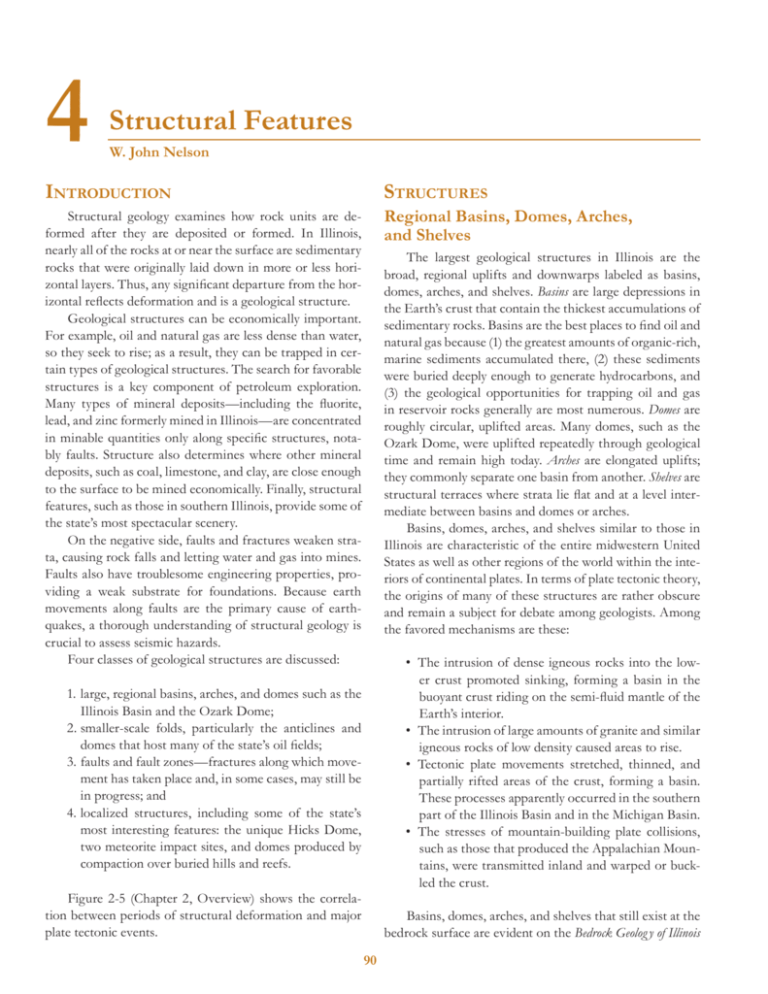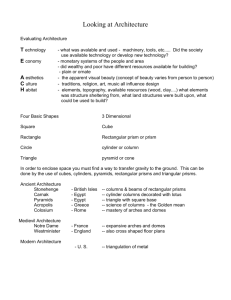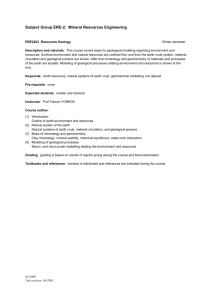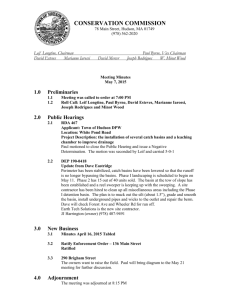Structural Features - Illinois State Geological Survey
advertisement

4 Structural Features W. John Nelson Introduction Structures Regional Basins, Domes, Arches, and Shelves Structural geology examines how rock units are deformed after they are deposited or formed. In Illinois, nearly all of the rocks at or near the surface are sedimentary rocks that were originally laid down in more or less horizontal layers. Thus, any significant departure from the horizontal reflects deformation and is a geological structure. Geological structures can be economically important. For example, oil and natural gas are less dense than water, so they seek to rise; as a result, they can be trapped in certain types of geological structures. The search for favorable structures is a key component of petroleum exploration. Many types of mineral deposits—including the fluorite, lead, and zinc formerly mined in Illinois—are concentrated in minable quantities only along specific structures, notably faults. Structure also determines where other mineral deposits, such as coal, limestone, and clay, are close enough to the surface to be mined economically. Finally, structural features, such as those in southern Illinois, provide some of the state’s most spectacular scenery. On the negative side, faults and fractures weaken strata, causing rock falls and letting water and gas into mines. Faults also have troublesome engineering properties, providing a weak substrate for foundations. Because earth movements along faults are the primary cause of earthquakes, a thorough understanding of structural geology is crucial to assess seismic hazards. Four classes of geological structures are discussed: The largest geological structures in Illinois are the broad, regional uplifts and downwarps labeled as basins, domes, arches, and shelves. Basins are large depressions in the Earth’s crust that contain the thickest accumulations of sedimentary rocks. Basins are the best places to find oil and natural gas because (1) the greatest amounts of organic-rich, marine sediments accumulated there, (2) these sediments were buried deeply enough to generate hydrocarbons, and (3) the geological opportunities for trapping oil and gas in reservoir rocks generally are most numerous. Domes are roughly circular, uplifted areas. Many domes, such as the Ozark Dome, were uplifted repeatedly through geological time and remain high today. Arches are elongated uplifts; they commonly separate one basin from another. Shelves are structural terraces where strata lie flat and at a level intermediate between basins and domes or arches. Basins, domes, arches, and shelves similar to those in Illinois are characteristic of the entire midwestern United States as well as other regions of the world within the interiors of continental plates. In terms of plate tectonic theory, the origins of many of these structures are rather obscure and remain a subject for debate among geologists. Among the favored mechanisms are these: • The intrusion of dense igneous rocks into the lower crust promoted sinking, forming a basin in the buoyant crust riding on the semi-fluid mantle of the Earth’s interior. • The intrusion of large amounts of granite and similar igneous rocks of low density caused areas to rise. • Tectonic plate movements stretched, thinned, and partially rifted areas of the crust, forming a basin. These processes apparently occurred in the southern part of the Illinois Basin and in the Michigan Basin. • The stresses of mountain-building plate collisions, such as those that produced the Appalachian Mountains, were transmitted inland and warped or buckled the crust. 1.large, regional basins, arches, and domes such as the Illinois Basin and the Ozark Dome; 2.smaller-scale folds, particularly the anticlines and domes that host many of the state’s oil fields; 3.faults and fault zones—fractures along which movement has taken place and, in some cases, may still be in progress; and 4.localized structures, including some of the state’s most interesting features: the unique Hicks Dome, two meteorite impact sites, and domes produced by compaction over buried hills and reefs. Figure 2-5 (Chapter 2, Overview) shows the correlation between periods of structural deformation and major plate tectonic events. Basins, domes, arches, and shelves that still exist at the bedrock surface are evident on the Bedrock Geolog y of Illinois 90







